As the latest in a long line of border clashes between India and Pakistan comes to an end, both sides are proclaiming victory, each supported by a flood of memes, viral videos, and a wide array of media articles, often more sensational than factual. In such a climate, it becomes essential to step back and attempt a critical assessment of what transpired and what tangible results have emerged.
On social media, such an objective analysis is nearly impossible. The already difficult task of understanding the situation is further complicated by the overwhelming tide of nationalist sentiment, religious affiliations, political ideologies, and regional as well as global rivalries —all of which cloud judgment and prevent realistic evaluation.
The so-called "experts" behind viral memes and edited videos, often armed with little more than basic Photoshop or video editing skills, contribute more noise than clarity. For anyone seeking a serious and informed assessment, these distractions must be set aside in favor of verified information, military analysis, and strategic context.
The portion of the title "War or Another Wagah?" for this article is chosen precisely because the Wagah border ceremony between India and Pakistan has become synonymous with a highly choreographed, symbolic display of rivalry. It features synchronized marching, aggressive stomping, and dramatic theatrics without a single shot fired.
However, unlike the controlled and peaceful ritual at Wagah, the actual clashes in Kashmir are far from symbolic. They involve real violence, casualties, and military hardware. In that sense, they may resemble less a ceremonial march and more a brutal, staged performance, often overshadowing strategic or tactical objectives.
So while the Wagah analogy points to the somehow theatrical side of conflict from the mid-70s until now, the reality in Kashmir remains dangerously real, making the contrast all the more striking.
Strategy and Tactics
Militaries across the world fight based on their doctrines and as per the requirements of the political leadership.
For example, Russian military doctrine divides military art into three main components: strategy, operative art ( “operational” is intentionally not used), and tactics. Each of these components has characteristics similar to those found in Western doctrines. India and Pakistan also have similar doctrines, so it's not a big deal, as it can be said popularly. The difference is in how it is applied and executed. As a prominent analyst, Jacques Baud noted, using the terminology of the French doctrine d’emploi des forces:
The strategic level is that of conception. Strategic action aims to lead the adversary to negotiation or defeat.
The operative level is cooperation and coordination of inter-force actions to achieve a given military objective.
Finally, the tactical level is maneuver execution at the weapons level, which is an integral part of the operational maneuver.
Tactical objectives must promote operational objectives, which in turn must promote the achievement of strategic objectives of a political or military nature. Each level plays with multiplier factors that should enable the objectives of the higher level to be achieved: the achievement of operational objectives results from the multiplier effect of inter-army synergies, and the achievement of strategic objectives results from the multiplier effect of the achievement of operational objectives.
The Outbreak
What triggered the most recent large-scale escalation—not just along the Line of Control but deep into strategically significant areas—was the massacre of 26 Indian civilians, mostly Hindu tourists, in Pahalgam, Jammu & Kashmir, on 22 April 2025. The attack was claimed by The Resistance Front (TRF), an offshoot of the Pakistan-based militant group Lashkar-e-Taiba (LeT). As has been the case for decades, TRF is widely believed to be supported by Pakistan’s Inter-Services Intelligence (ISI).
Indian security agencies have identified three individuals behind the Pahalgam terror attack. Two of them — Lashkar-e-Taiba (LeT) chief Hafeez Saeed and his deputy Saifullah Kasuri — are currently based in Pakistan, while the third, Hashim Moosa, is believed to be hiding in the forests of South Kashmir.
What made this attack different from previous ones that were also blamed on Pakistan-based groups is India’s response. This time, instead of calling for international mediation, border exchange of fire, or issuing diplomatic notes, India launched a carefully planned military operation.
Such operations are not conceived overnight or even within a few weeks. They involve meticulous planning over an extended period, just in case something like that happens, taking into account a wide range of scenarios and tactical maneuvers. A general operational framework is typically developed first, followed by the refinement of specific details tailored to the latest intelligence assessments and the evolving on-ground situation.
As Prime Minister Narendra Modi stated:
“Terror and talks cannot go together. Water and blood cannot flow together.”
At the strategic level, a clear decision was made: to defeat the terrorists rather than engage in negotiations. This directive empowered the military to develop a comprehensive operational plan, with critical details—such as strike locations—meticulously gathered and analyzed.
At the operational level, under the codename "Sindoor," India’s inter-force command, involving all branches of the military, developed a coordinated plan to strike identified terrorist bases. The Air Force was tasked with taking the lead. At the same time, ground forces, including those stationed along the Line of Control and at tactical depth within Indian territory, were assigned supporting roles. Additionally, the Navy, deploying a potent strike force, was also given a support mission as part of the unified operation.
Indian Operation “Sindoor” and Pakistan response “Bunyan al-Marsoos”
In the early hours of 7 May 2025, India launched a large-scale military operation targeting terrorist camps in Pakistan and Pakistan-administered Kashmir. The offensive was marked by precision and overwhelming force, involving 80–90 aircraft, including Rafale fighter jets armed with SCALP cruise missiles and AASM Hammer glide bombs, as well as BrahMos supersonic cruise missiles and SkyStriker loitering munitions.
The strikes effectively destroyed key militant infrastructure, delivering a strong message against Pakistan’s alleged support for cross-border terrorism. Although Pakistan denied any incursion or damage to its territory, intelligence and defense analysts reported that the scale and accuracy of the strikes had severely crippled its network of proxy militant groups.
The aftermath of the operation revealed the severity of the losses, highlighted by a high-profile state funeral attended by top Pakistani military and government officials. Notably, the presence of a U.S.-designated terrorist among the mourners served as a rare and telling public confirmation of the toll the strikes had taken on Pakistan’s militant infrastructure.
In the hours leading up to the attack, Pakistan closely monitored Indian airspace and responded by scrambling its fighter jets. At one point, more than 120 aircraft on both sides were airborne, reflecting the high state of alert. Within an hour of India launching missiles from its territory, Pakistani fighters fired long-range, beyond-visual-range (BVR) missiles toward Indian aircraft.
The air battle, which raged for over an hour, was characterized by both sides operating from standoff distances, reflecting a cautious yet technologically complex engagement. Pakistani Air Force (fighters remained in depth, engaging from maximum missile ranges—an approach that significantly limited the effectiveness of their air-to-air missiles. It is likely that the Indian Air Force, which employed a similar strategy, encountered comparable limitations in its air-to-air engagements.
Verifying actual combat kills remains difficult given the high speeds, long distances, and electronic warfare environments. In such scenarios, where both sides aim to control the narrative, misinformation and disinformation are inevitable. As a result, the precise outcomes of the air-to-air encounters are likely to remain shrouded in speculation and strategic ambiguity.
What followed remains highly contested. Pakistani authorities claimed to have shot down five Indian aircraft, including three of the much-prized Rafales, releasing several videos allegedly showing crash sites. The situation quickly ignited a frenzy on social media, reaching a level of virality that even surpassed the early days of misinformation during the Russian intervention in Ukraine.
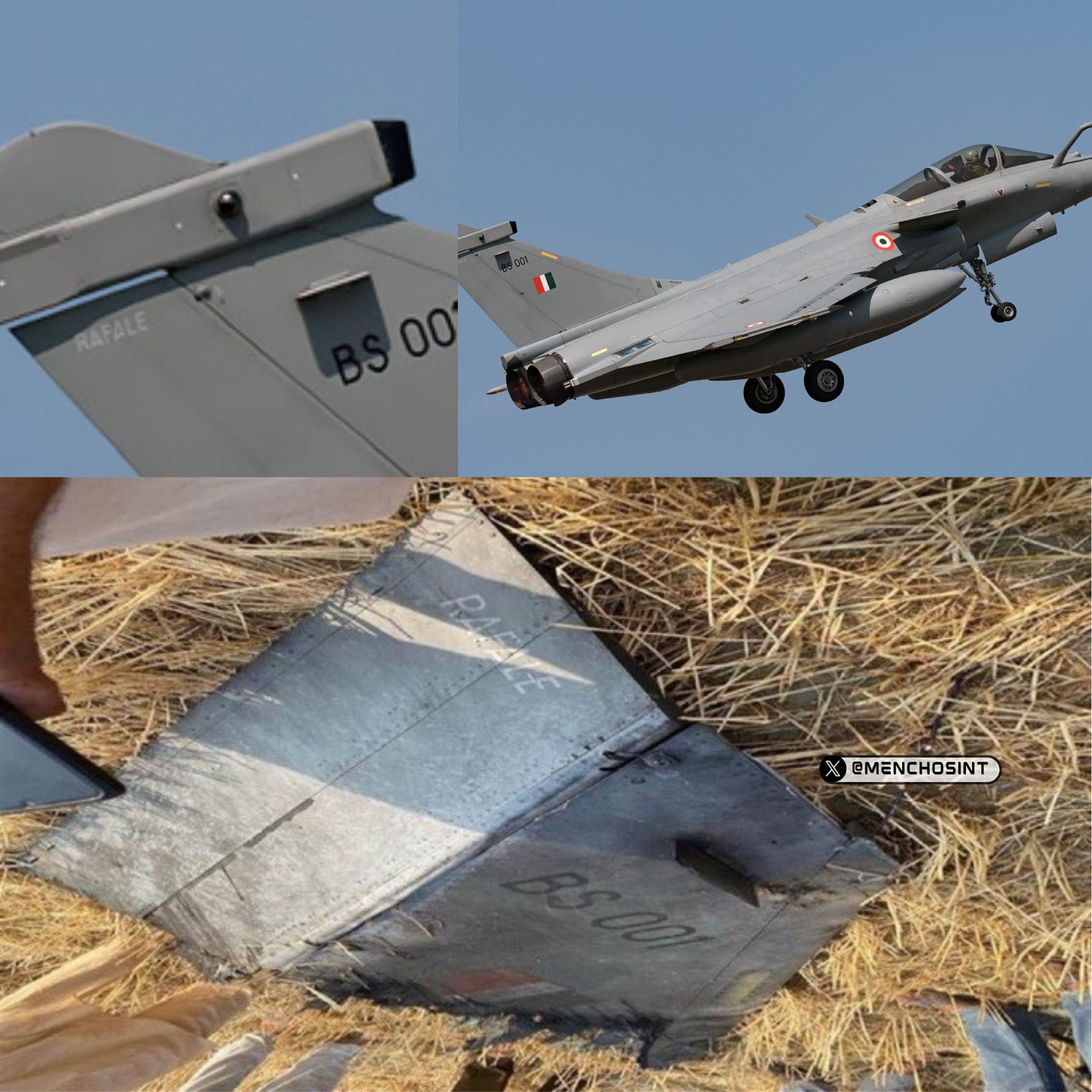
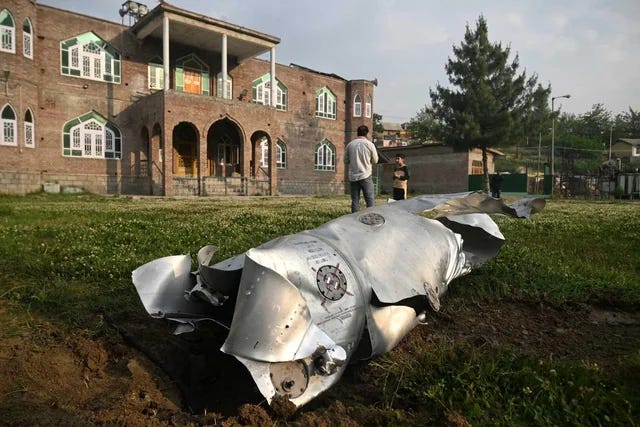
Both sides saw an explosion of narratives, ranging from exaggerated claims to outright fabrications. Photoshopped images, viral videos, and commentary from self-proclaimed "military experts" flooded platforms, further muddying the waters of truth. Amid the chaos, verifiable information remained scarce.
The reality was that ongoing military operations on both sides severely restricted the flow of real-time combat data. In this case, both militaries appeared focused on fighting a war, not managing a propaganda campaign —a contrast to many past conflicts where public perception often took precedence over operational secrecy.
Let us discuss the facts: Indian aircraft with available air-to-surface munitions unleashed precise strikes, effectively eliminating designated targets on the Pakistani-controlled side. These targets are identified through meticulous visual, ELINT, and HUMINT operations. It is highly likely that the Indian planners took all measures during the identification to avoid potential collateral damage. The first blow was executed in that manner.
On the other side, the Pakistani air force, including airborne radars and ground-based radars, detected the Indian strike groups and launched BVR BL-15E Chinese-manufactured missiles from their J-10C fighters.
Within two minutes of the Indian missile launches, the Pakistan Air Force executed a swift counterstrike. Air Vice Marshal Ahmed characterized the engagement as a “shoot or be shot” scenario, underscoring the urgency and high-stakes nature of the situation, where immediate retaliation was essential to survival.
He emphasized that the encounter was not a traditional close-range dogfight but rather a long-range engagement shaped by modern standoff weaponry and radar-guided missile tactics. According to the PAF’s account, the counterstrike resulted in the downing of several Indian aircraft. Among those claimed were a Rafale near Srinagar, approximately 85.3 km from the Line of Control (LoC); another Rafale near Jammu, just 11.27 km from the LoC; and a third near Bathinda, roughly 37 km from the international border. Additionally, PAF sources reported successful engagements against a MiG-29 and a Su-30MKI in other sectors. The Mirage 2000 is also added later.
Air Vice Marshal Ahmed stated that the PAF possesses detailed radar and electronic warfare data substantiating these claims. However, as with most high-intensity, high-technology conflicts, independent verification remains challenging, and narratives on both sides continue to compete in the information domain.
His statement also claimed India’s first female Rafale pilot, Squadron Leader Shivangi Singh, had been captured alive by the Pakistani military; however, no visual proof of capture was presented at that time, but rather suspicious video of a bunch of civilians running toward the distant smoke.
Neither ground-based radar records nor airborne radar records were published at the time of this article. Pakistani officials presented PowerPoint presentations and audio records (intercepted conversation of the Indian pilots). Media and “experts” on both sides picked up this, and the whole circus erupted, as previously mentioned.
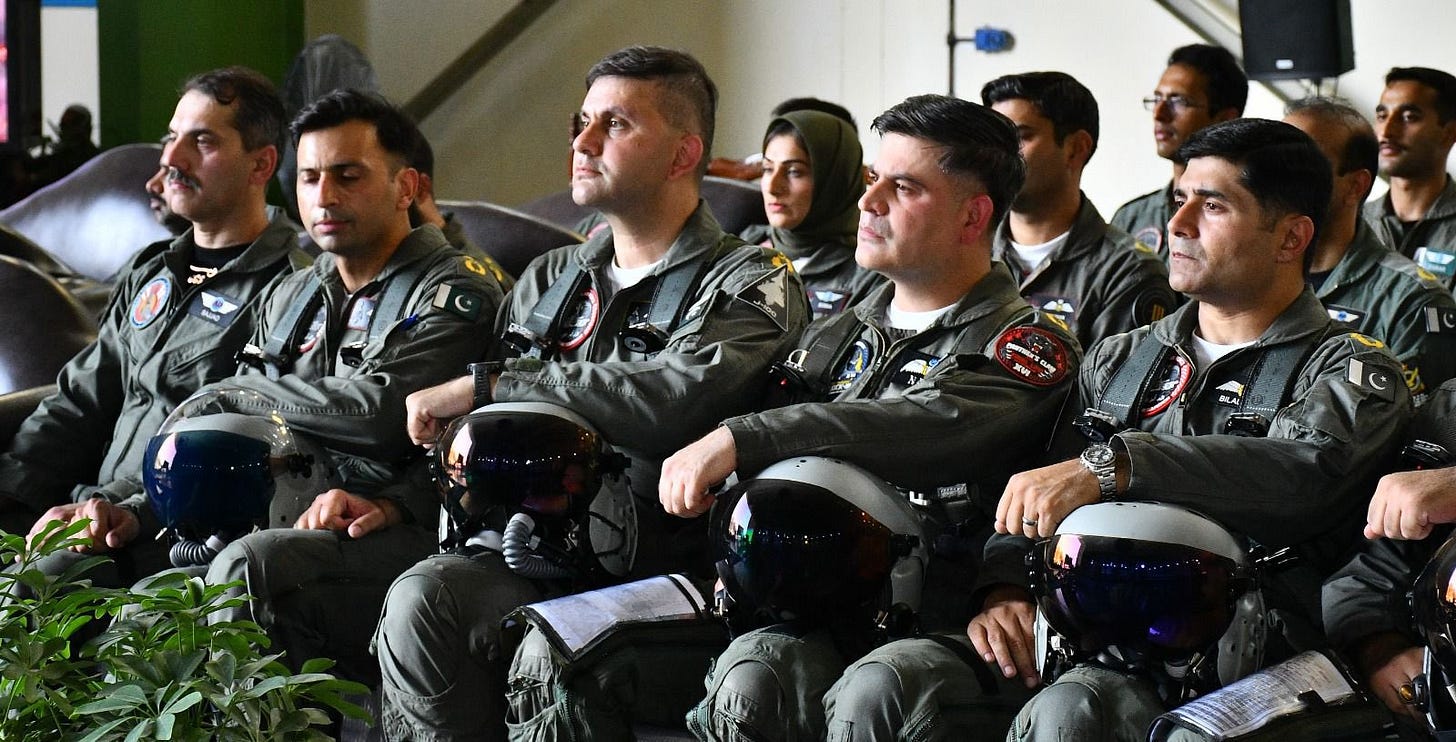
Escalation
Following deep-strike operations inside Pakistan and the subsequent response by the Pakistani Air Force, India escalated its campaign by targeting key components of Pakistan’s air defense network in Lahore. According to official Indian military briefings, Indian forces claimed to have destroyed Chinese-supplied air defense systems, including HQ-9 batteries, as well as radar installations crucial to Pakistan's ability to monitor and counter aerial threats.
At the time of writing, the author has not encountered verifiable records or evidence that can confirm the destruction of these sites beyond a reasonable doubt. While social media platforms are flooded with claims about the destruction of air defense systems, such statements are often inaccurate or exaggerated.
In professional military terminology, the "destruction" of an AD system —such as the HQ-9B, or S-400 —means that all critical combat control components, including command centers, fire control radars, surveillance systems, and missile guidance stations, have been incapacitated to the extent that restoration or repair is either impossible or would take an extended period of time.
Merely damaging one or two launchers, without neutralizing the command-and-control infrastructure, may degrade a unit’s operational capacity but does not constitute full system destruction. Readers encountering such claims in the media should approach them with caution.
Even a temporary loss of air defense assets over strategically important areas like Lahore could expose vulnerabilities in Pakistan’s military infrastructure, particularly its reliance on foreign-supplied technology.
According to Indian reports and some unverified video clips circulating online, residents of Lahore reported widespread panic during the strikes, with explosions lighting up the night sky and air raid sirens failing to mask the chaos unfolding above.
If India indeed managed to temporarily neutralize key elements of Pakistan’s air defense architecture, it would significantly reduce the effectiveness of Pakistani airspace defenses and potentially open the door for further Indian military operations.
During the night of May 9, 2025, India carried out a large-scale strike targeting 11 Pakistani airbases, using BrahMos supersonic cruise missiles with the aim of disrupting their ability to launch aircraft and conduct other operations, according to sources within the Indian defense establishment. Among the targets was Nur Khan Air Base near Rawalpindi, a strategically important facility located close to Pakistan’s military headquarters and vital for air refueling operations. Other key bases, including Rafiqui Air Base in Shorkot and several additional strategic locations, were also struck using a combination of BrahMos missiles, as well as SCALP missiles launched from Rafale fighter jets.
The strikes on the airbases, which required a complex air campaign, began with the deployment of decoys, designed to have a very similar radar cross-section as fighter jets.
Once the Pakistani early warning radars and air defense network were activated to engage these incoming decoys, the IAF launched its real ordnance, including the indigenously made Harop loitering munitions, targeting Pakistani air defense radars and command and control systems.
The most modern Pakistani HQ-9 air defense missile systems applied standard procedures when the crews relocated them to different combat positions, but they were still detected after being activated.
The Indian Air Force then followed up with long-range missile attacks on Pakistani airbases. Approximately 15 BrahMos missiles, along with SCALP, RAMPAGE, and Crystal Maze precision-guided munitions, were launched during the offensive. Some of the Harops and SCALPS were intercepted.
The aircraft packages for these missions were primarily controlled from the Western Air Command and the Southwestern Air Command areas of responsibility.
Meanwhile, the Pakistani Air Force launched retaliatory strikes using fighter jets and ballistic missiles, but these were largely thwarted by India’s layered air defense system, comprising the Russian-made S-400, Israeli MR-SAM, indigenous Akash missile systems, as well as older platforms. In any case, interception was not 100%.
Indian media and some pro-government analysts described the operation as a "devastating blow" or even "flattening" of Pakistani airbases, suggesting a level of destruction that significantly surpassed the initial strikes earlier in the conflict. These narratives claimed that the attacks crippled parts of Pakistan’s air force infrastructure and left its military leadership stunned.
However, stepping back for a more objective analysis, the use of terms like "flattening" or "destroying" airbases appears to be a significant exaggeration. While it is highly likely that the strikes hit critical facilities, including runways and support infrastructure, causing substantial damage, the idea of these bases being completely destroyed or rendered permanently inoperable is misleading.
In reality, even heavily damaged airbases are rarely "destroyed" in the absolute sense. More accurately, they may become temporarily incapacitated, reducing their operational capacity during the ongoing conflict. This degradation can certainly compound challenges for the defending side, especially if command and control nodes, fuel depots, or ammunition storage facilities are struck without adequate redundancy.
Military logistics and infrastructure planning typically include contingency repair protocols, particularly for runways and essential facilities, which can allow for partial recovery of operational capability over time. Therefore, while such attacks can have a significant tactical impact, they rarely result in permanent strategic paralysis.
Once again, media narratives often prioritize dramatic language and emotional impact over accurate military assessment. Reports of total destruction or irreversible damage should be approached with skepticism until independently verified.
In any case, what is certain is that the Indian planners meticulously prepared and executed the operation, carefully accounting for the strength of Pakistan’s air defenses and anticipating its likely response. This level of coordination and foresight is a clear indication of the maturity and seriousness behind the planning process.
Pakistan’s response was to attack deep into the Indian territory with the key strategic targets. With certainty, it can be said that these kinds of scenarios are analyzed and planned on operational and tactical levels.
On the same night that India launched its large-scale strikes, Pakistan attempted a counteroffensive, deploying both aircraft and ballistic missiles aimed at Indian military installations and strategic infrastructure. According to Pakistani sources, these attacks were highly successful, claiming to have damaged or destroyed key Indian targets.
India’s response painted a very different picture. Officials reported that the country’s advanced air defense systems, including the S-400 and the Integrated Air Defense System, successfully intercepted and neutralized the majority of the incoming threat. These systems are designed to engage ballistic missiles, drones, and aerial platforms, and according to Indian reports, they performed with high effectiveness.
Pakistani drones, fighter jets, and missiles targeting Indian bases in Awantipora, Pathankot, and Bhuj were either intercepted or shot down before causing significant damage.
During a briefing on targets struck in India, Pakistan Air Vice Marshal Aurangzeb Ahmad claimed that the Pakistani Air Force had successfully damaged components of India’s S-400 air defense system during combat operations. As evidence, a satellite image of the alleged site and information about a deceased Indian operator were presented.
While it is possible that some elements of the system may have been hit—potentially support units such as refuelers or transport trucks—there is no credible indication that the S-400 system was neutralized as a combat-capable unit.
Pakistani officials also pointed to vehicle tracks at the site as further evidence. However, this is not conclusive proof, as combat units often reposition after an engagement.
Pakistan's claims of destroying critical Indian assets, such as S-400 batteries or BrahMos missile systems, were dismissed by India as propaganda.
A pattern familiar from other modern conflicts—what some might call the "Ukrainian model" —seems to emerge here. It's important to note that no air defense system is 100% impenetrable; there is always a chance that some portion of an attack will get through. However, any claim of having destroyed major defense assets must be backed by credible evidence.
Statements made during press conferences or illustrated with flashy PowerPoint slides hold little weight in professional military circles. Such presentations often serve more as public relations tools than accurate battlefield assessments, meant to rally domestic support or fuel online rhetoric rather than inform sober analysis.
Pakistan also launched six ballistic missiles toward Delhi. According to Indian reports, “S-400 successfully intercepted all six missiles mid-flight. The interception averted what could have been a catastrophic strike on a major urban center and demonstrated the strength of India’s layered air defense capabilities”.
The next phase in India’s military campaign was a precision strike on Sargodha Air Base, one of the most heavily defended and strategically significant installations in the region. Sargodha is not only home to the Combat Commanders School, Pakistan’s premier fighter pilot training institution, but it also serves as a major operational hub for aircraft capable of delivering nuclear weapons. Nearby underground facilities are widely believed to house elements of Pakistan’s nuclear arsenal.

The strike was executed with remarkable accuracy, destroying or severely damaging key infrastructure. While India has not officially confirmed the target list or objectives, the symbolic and strategic implications were unmistakable.
The message to Pakistani leadership was clear: India was prepared to strike at the heart of Pakistan’s most sensitive military assets. The proximity of the strike to nuclear-related infrastructure sent shockwaves through both Pakistani defense circles and international observers, including the United States, which has long expressed concerns over the security of Pakistan’s nuclear program.
This development raised fears, however remote, of a potential nuclear escalation, pushing the conflict to a new and dangerous threshold. By targeting Sargodha, India demonstrated a bold willingness to challenge Pakistan’s core strategic deterrents, marking a critical turning point in the confrontation.
On 10 May, a temporary halt in fighting was agreed upon. Pakistan, reportedly through diplomatic mediators, requested a ceasefire. The Indian military, however, referred to the pause more cautiously as a “stoppage of firing” —a subtle but deliberate semantic distinction. This phrasing underscored India’s intent to retain strategic control over the situation, signaling that the pause was tactical rather than a formal concession or resolution.
Strategic objectives
On a strategic level, India set out to achieve several key objectives through Operation Sindoor, its limited but decisive military campaign:
Deterrence: Any future terrorist attacks originating from Pakistani territory will now be met not with diplomatic protests, but with direct military retaliation.
Capability Demonstration: India showcased its ability to strike any target within Pakistan at will, while Pakistan struggled to effectively penetrate Indian airspace or inflict meaningful damage on Indian military assets.
Controlled Escalation: Retaliatory strikes were executed swiftly and precisely, targeting high-value infrastructure without escalating into full-scale war. This demonstrated a clear doctrine of controlled escalation, sending an unmistakable message that India would respond decisively to any provocation, but on its own terms.
Operational Independence: The operation was conducted entirely without direct foreign assistance, relying solely on India’s military capabilities, which included advanced fighter jets like the Rafale, supersonic cruise missiles like BrahMos, and precision-guided munitions.
Operation Sindoor was a limited military action, carefully planned and executed with specific, well-defined objectives. On the strategic chessboard, it served as a precursor to political maneuvering, illustrating how controlled military force can be used to achieve broader diplomatic and deterrence goals.
India’s restraint should not be mistaken for weakness, but rather interpreted as a sign of maturity and strategic discipline. By imposing costs on the adversary, redefining red lines, and maintaining escalation dominance, India did more than just respond to an attack—it fundamentally altered the strategic equation.
What made this operation distinct from previous cross-border strikes was the speed and scale of India’s response. Unlike earlier instances, where delays diluted the impact, this time India hit back immediately, signaling a shift in strategic posture.
Pakistan, for its part, appeared to follow a pre-established defense plan, relying heavily on its air force and air defense systems to intercept and repel Indian strikes. According to official statements, skilled pilots engaged aggressively against Indian aircraft, attempting to assert air superiority.
Claims from Pakistani authorities varied widely, from reports of shooting down multiple modern Indian aircraft to assertions of having obliterated key targets inside India. However, these claims remain largely unsubstantiated. As of this writing, no credible evidence, such as clear satellite imagery, wreckage verification, or independent confirmation, has been presented to support such narratives.
While there is no reason to doubt the professionalism and dedication of Pakistani pilots and air defense personnel, convincing the international community and military experts requires more than PowerPoint slides and digitally manipulated images. In professional military circles, evidence-based reporting is essential, not propaganda dressed up as battlefield intelligence.
Tools of trade: J-10Cs, PL-15E, BrahMos, HQ-9…
The first day of the conflict was flooded with competing claims, particularly from Pakistani sources asserting that their Air Force had used Chinese-made J-10 fighters armed with PL-15E beyond-visual-range missiles to shoot down five Indian aircraft (3 Rafales, 1 Su-30MKI, and 1 MiG-29). These statements were widely circulated in the media and social platforms, adding to the chaos.
The PL-15E is an advanced, beyond-visual-range missile developed by China, designed to enhance the capabilities of its stealth fighter fleet, including the Chengdu J-20 and Shenyang J-35A. This export variant (E in the name) is tailored for international clients and features some design modifications.
Its extended range and high speed make it a formidable weapon in air superiority missions. It allows for engagements at significant distances and enhances the survivability of launch platforms.
The PL-15E missile became a focal point in pro-Pakistani media narratives, where it was portrayed as a key asset capable of challenging Indian air superiority. This narrative was also prominently amplified by Chinese state media, which has a vested interest in showcasing the effectiveness of its military exports.
China’s growing military-industrial complex seeks to position itself as a global arms supplier, and real-world use of its weapons systems, such as the PL-15E, offers valuable validation. For Beijing, combat performance helps bolster marketing claims and enhances the credibility of its defense industry in international markets.
Therefore, it comes as no surprise that Chinese media framed the missile’s involvement through a lens that emphasized its strategic importance and presumed success, despite limited independent verification.
However, little of this was backed by concrete evidence in the field. There were no cockpit recordings (yet), ground radar logs, parametric data, or other verifiable tools typically used in professional military analysis to confirm such claims. The information vacuum led to a flood of speculation, misinformation, and emotionally charged narratives.
What followed was a verbal slugfest between pro-Indian and pro-Pakistani commentators across media outlets and online spaces. Instead of fostering informed debate, the discourse often devolved into a media circus, where sensationalism overshadowed fact, and nationalistic fervor drowned out objective analysis.
In modern air warfare, credible battlefield assessments require technical verification, not just press releases or video clips. Without that foundation, claims—no matter how bold—remain unproven and speculative at best.
There is a high probability that Pakistani forces were able to lock onto Indian Rafale fighter jets and launch beyond-visual-range missiles during the aerial engagements. However, beyond these claims, there is no credible or verifiable evidence to confirm that any of the missiles resulted in actual hits.
It is also plausible that some Indian aircraft sustained damage or were downed during the initial clashes. Given the scale of the engagement, involving over 100 fighter jets from both sides, it is reasonable to assume that some losses may have occurred on either side.
That said, any definitive assessment requires independent verification, including data from radar logs, cockpit recordings, and post-mission analysis. Unfortunately, social media has become a battleground of conflicting narratives, often flooded with speculation, manipulated images, and unverified videos, making it even harder to separate fact from propaganda.
Until official or independently corroborated reports emerge, claims of aerial victories or losses should be treated with caution.
Parts of PL-15E missiles were recovered, but, as far as publicly available information indicates, no intact warheads have been located. This could suggest that the directional warheads activated in proximity to their intended targets, possibly resulting in premature detonation, failure to acquire a valid target lock, or self-destruct mechanisms engaging as designed.

Additionally, some missile seekers were also recovered, indicating efforts to analyze the guidance systems used.
Pakistani authorities released photographs of debris, including what appeared to be a jet engine, a fuel tank, and a section resembling the tail of a Rafale fighter jet. However, many analysts and experts have questioned the authenticity of these images, suggesting that some level of digital manipulation may have occurred.
To be fair, PL-15E is a very capable missile and can hit the target as designated. The author of this article believes that there were hits. However, the level of success is not known yet.
The other star on the Pakistani side is J-10C. Pakistan ordered 25 J-10C aircraft, with the first batch inducted in March 2022. These jets were showcased in the Pakistan Day military parade on 23 March 2022, where they performed aerial maneuvers, demonstrating their agility and capability.
Brigadier General Maqsood Akhtar, an aviation analyst, noted, “The J-10C enhances the PAF’s offensive and defensive capabilities, providing an effective response to India’s Rafales.”
The J-10C deal reflects deepening military cooperation between Islamabad and Beijing. It also underscores China’s role as a reliable defense partner for Pakistan amid tightening Western export controls.
While the J-10C is a modern aircraft, some critics argue that it may not match Western jets like the F-35 or Rafale in terms of stealth and sensor fusion. Additionally, maintenance and long-term sustainment of a foreign jet fleet always pose logistical and operational challenges.
With advanced avionics, powerful missiles, and strong Chinese backing, the J-10C enhances Pakistan’s aerial deterrence and adds a sophisticated dimension to its military posture in South Asia. Whether this acquisition shifts the regional air power balance remains to be seen, but it undoubtedly raises the stakes in the subcontinent’s strategic equation.
The BrahMos missile emerged as a standout weapon during the conflict. Developed jointly by India and Russia, it is one of the world's most advanced supersonic cruise missiles, renowned for its speed, precision, versatility, and lethality.
Named after the Brahmaputra River (India) and the Moskva (Moscow) River (Russia), "BrahMos" is a portmanteau reflecting the strong defense collaboration between the two nations.
The original BrahMos variant had a range of approximately 290 km, but recent upgrades have extended that to 450–500 km, and potential future versions are expected to reach even greater distances.
One of its most notable features is its extremely high speed, up to Mach 3, or nearly three times the speed of sound, making it exceptionally difficult to intercept by enemy air defense systems.
In the Indian military inventory, the BrahMos can be launched from multiple platforms:
Land-based mobile launchers
Naval platforms, including surface ships and submarines
Air-launched variants, deployed from Sukhoi Su-30MKI fighters
It carries a conventional warhead weighing between 200–300 kg, which is more than sufficient to cause devastating damage to both hardened and soft targets.
The missile’s guidance system combines inertial navigation with GPS/GLONASS satellite navigation, transitioning to an active radar homing seeker in the terminal phase for high-precision targeting.
Its accuracy is exceptional, and it can engage targets using steep dive attacks or low-altitude sea-skimming trajectories, further enhancing its survivability and effectiveness against well-defended objectives.
During this conflict, the BrahMos proved itself not only as a strategic deterrent but also as a battlefield game-changer, capable of delivering decisive blows with minimal warning. Future development includes BrahMos-NG (Next Generation), a smaller, lighter version under development for deployment on a wider range of platforms, including fighter aircraft, and a hypersonic version (BrahMos-II), planned to reach speeds of Mach 7 and currently under development.
The BrahMos stands as a symbol of Indo-Russian defense cooperation and India’s growing self-reliance in advanced missile technology.
The star of the Pakistani air defense is the Chinese-made HQ-9. This system is similar to the Russian S-300 but has plenty of improvements, which make it a hybrid design. Radar, seeker head, and command-and-control (C2) components are heavily influenced by American and Israeli technology. This blend of technologies has enabled China to create a system that combines proven performance with indigenous innovation. The HQ-9 employs a track-via-missile (TVM) guidance system, which merges inertial navigation, mid-course correction via uplink, and terminal-phase active radar homing. This allows the missile to engage a wide range of aerial threats, including aircraft, cruise missiles, and tactical ballistic missiles.
Each battery typically consists of several transporter erector launchers (TELs), a fire control radar unit, and a command post with auxiliary units. The system can simultaneously track dozens of targets and engage multiple threats.
The missile has an estimated range of over 200 kilometers, depending on the variant, and is capable of operating in all weather conditions. Its mobility and rapid deployment capability make it suitable for both strategic and tactical air defense roles. It can leave the firing position within 5 minutes, effectively shortening the time exposed to counterattacks once the radar emission is detected and missiles launched.
Conclusion
Operation Sindoor concluded at 1700 hours on 10 May, after 88 hours of intense combat. It commenced at 0105 hours on 7 May with a precise 25-minute blitzkrieg by India, targeting nine high-value terrorist hubs. The strikes triggered one of the largest air battles in the subcontinent’s history, fought from standoff ranges of 100–150 kilometers between near-peer adversaries. The aerial engagement lasted over an hour, setting the tone for the next 72 hours dominated by a complex web of missile strikes, drone operations, and integrated air defense responses.
In the early hours of 10 May, the Indian Air Force (IAF) established clear air superiority by striking Pakistani airfields and critical military infrastructure across the country with near-total impunity. Confronted with the prospect of escalating costs and lacking the means for a proportional response, Pakistan sought a ceasefire. The United States played a key role in mediating and facilitating a truce.
India’s primary political aim during Operation Sindoor was to re-establish credible deterrence against Pakistan, thereby dissuading it from continuing its terrorism-driven proxy war in Jammu and Kashmir or launching similar operations elsewhere within India’s heartland. This objective was pursued through calibrated military action designed to remain below the threshold of conventional war, and crucially, beneath Pakistan’s declared nuclear red lines. By operating in this strategic grey zone, India sought to impose costs on Pakistan without triggering full-scale conflict.
Pakistan's armed forces predominantly shape its political and military strategy. During the conflict, Pakistan’s political objective was to prevent India from securing a decisive victory that would reassert its deterrent posture. Simultaneously, it aimed to preserve strategic autonomy, assert its relevance on the global stage, and refocus international attention on the Jammu and Kashmir “dispute.”
To achieve this, Pakistan adopted a military strategy centered on stalemating Indian advances through the innovative use of its limited but sophisticated military technologies. The intent was to blunt India’s escalatory conventional operations and launch a higher-intensity riposte, thereby raising the cost of further Indian military action. In the event of significant losses or deteriorating battlefield conditions, Pakistan was prepared to escalate to nuclear brinkmanship, leveraging the threat to trigger international diplomatic intervention.
Drawing from lessons learned during the 2019 Balakot crisis and Operation Swift Retort, Pakistan refrained from initiating the conflict, preferring to maintain a reactive posture. Like India, it chose to keep its relatively weaker army and navy in a defensive stance, relying primarily on its air force and missile capabilities.
With both sides possessing near parity in key domains and adopting similar doctrines of calibrated escalation, the outcome of the conflict was determined less by battlefield gains and more by psychological dominance—by compelling the adversary to blink first.
Operation Sindoor represents a new phase in India’s strategic thinking: one marked by preemptive capability, precision, and calculated political messaging. The use of force was strong but controlled, demonstrating both technological prowess and operational maturity.
The conflict exposed Pakistan’s vulnerabilities in its air defense architecture, intelligence preparedness, and public communication strategy. While bold claims may buoy national morale, long-term credibility hinges on verifiable results.
Ultimately, this confrontation highlights the role of clear planning, adaptive execution, and strategic foresight in achieving political goals through military means.
While the skies have quieted, the strategic contest between India and Pakistan is far from over. If judged purely by immediate outcomes, India appears to have achieved its operational objectives, while Pakistan was the one to propose a ceasefire, an indication of pressure. In the aftermath, Wagah reopened within days, signaling a return to uneasy normalcy. But in the broader chessboard of South Asian geopolitics, this was merely one round in a much longer game.
So, who won? In essence, each side claimed victory on its own terms. Both suffered casualties—human and material. Aircraft were shot down, destroyed on the ground, and key targets were struck. Yet, amid the fog of war and the noise of propaganda, both sides declared success.
This was just one round in a long-standing, high-stakes rivalry—a peer conflict with deep historical roots and no clear end in sight.
If you like the article (and many more articles regarding military subjects will come), you can buy me a coffee:
https://www.buymeacoffee.com/mmihajloviW
[i] Edited by Piquet (EditPiquet@gmail.com)

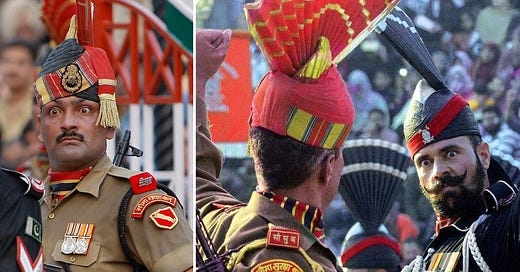




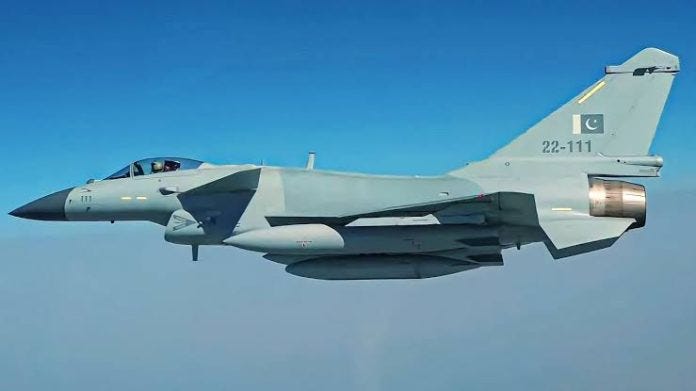
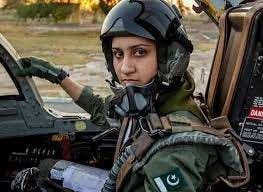
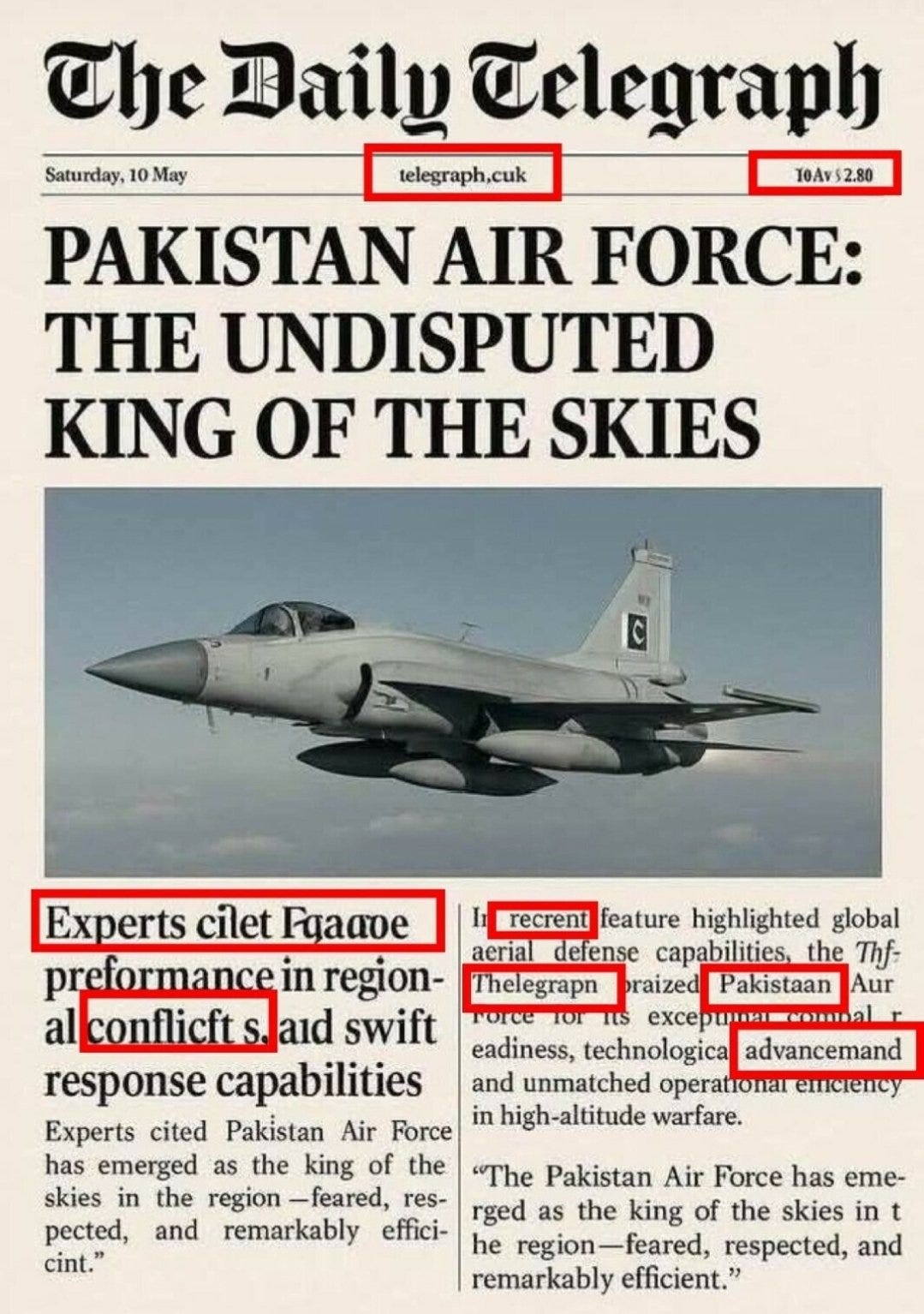
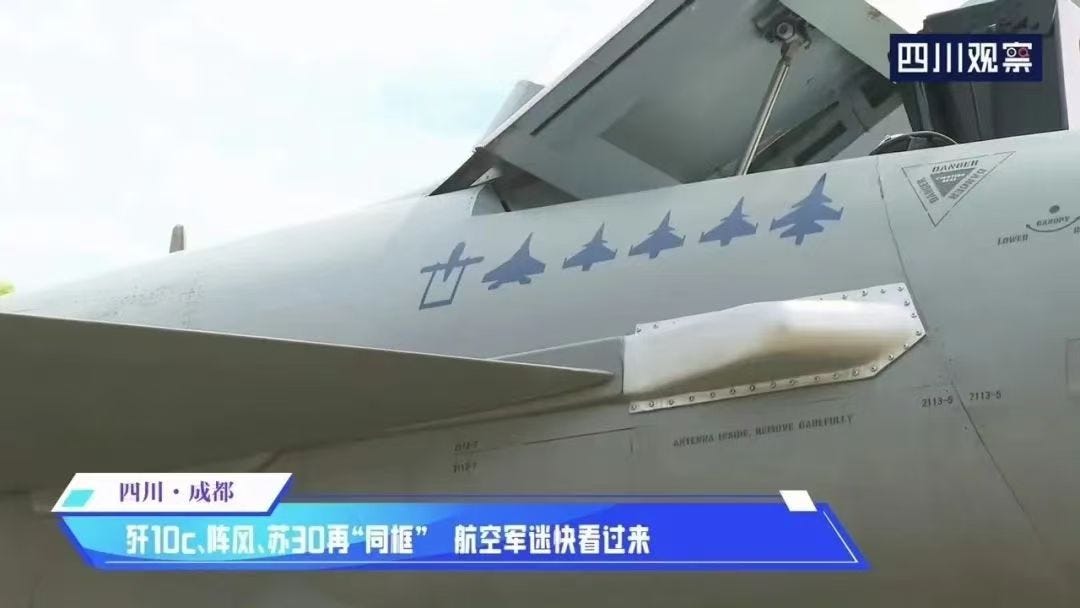
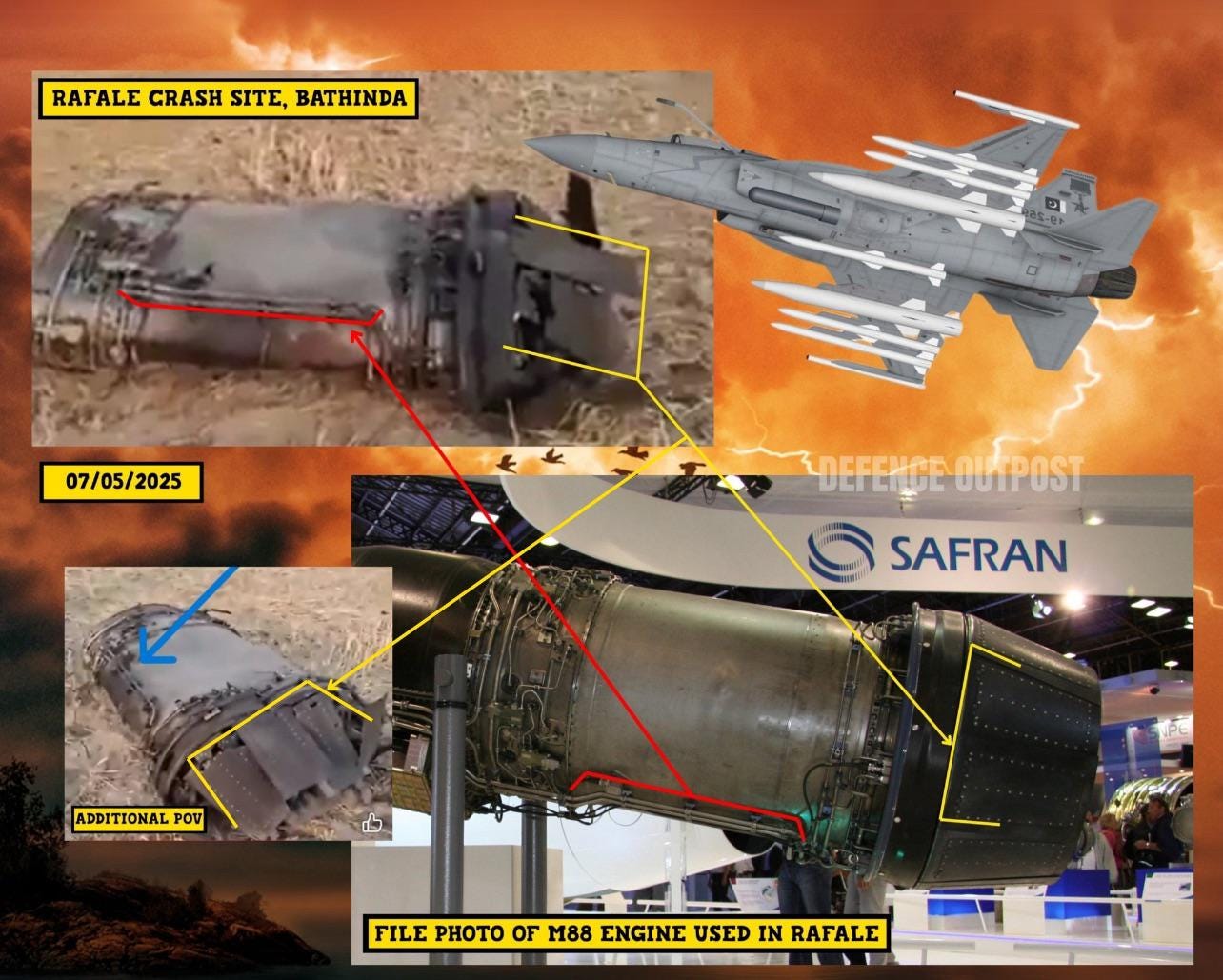
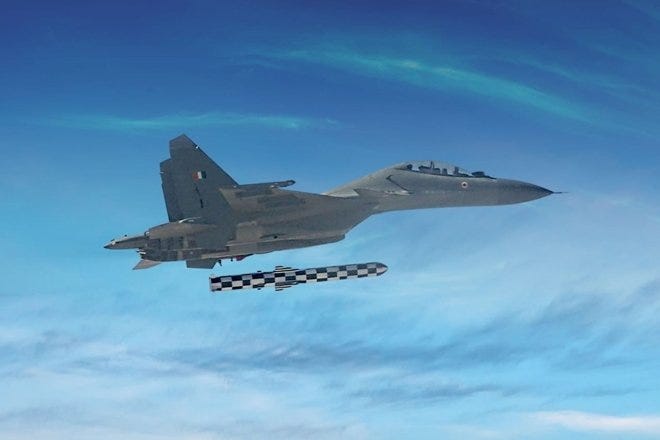
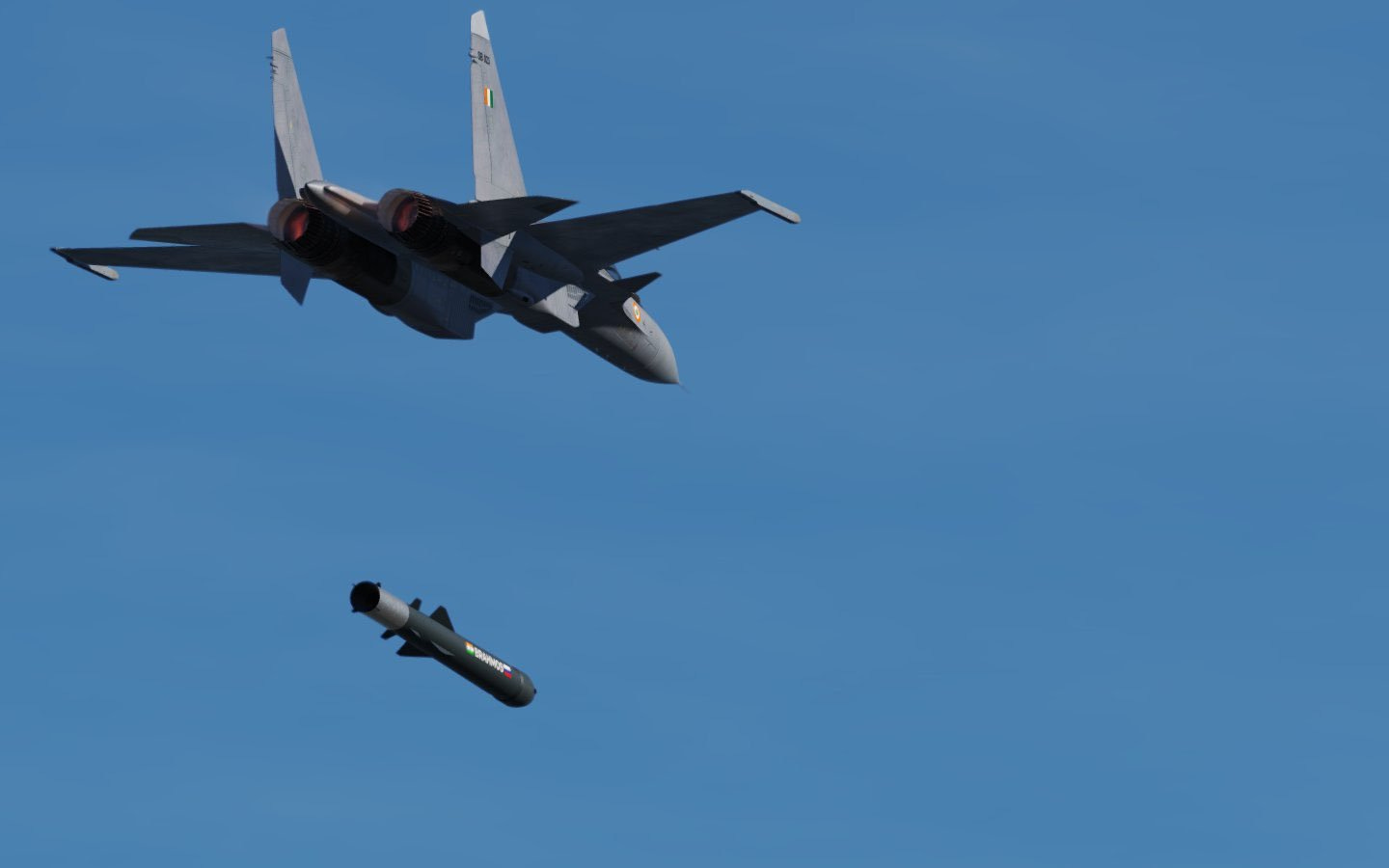
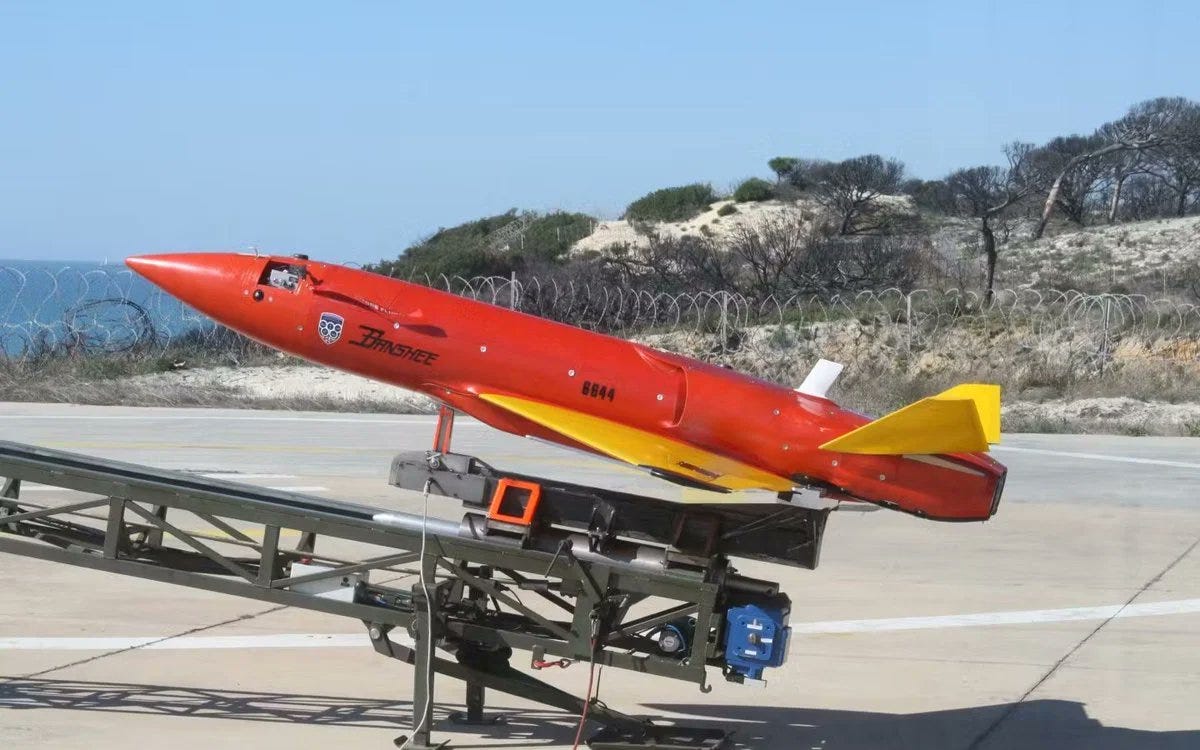
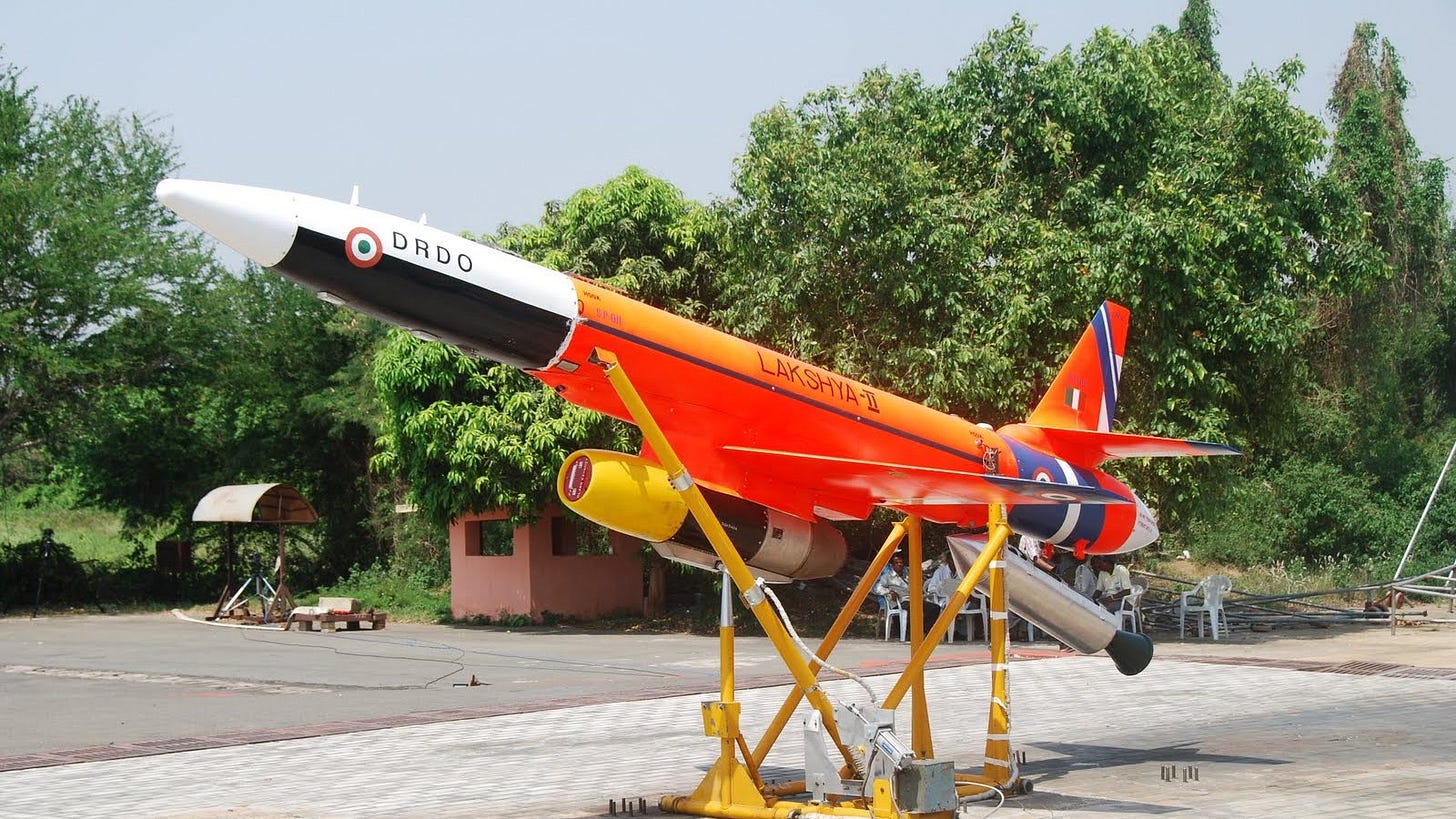
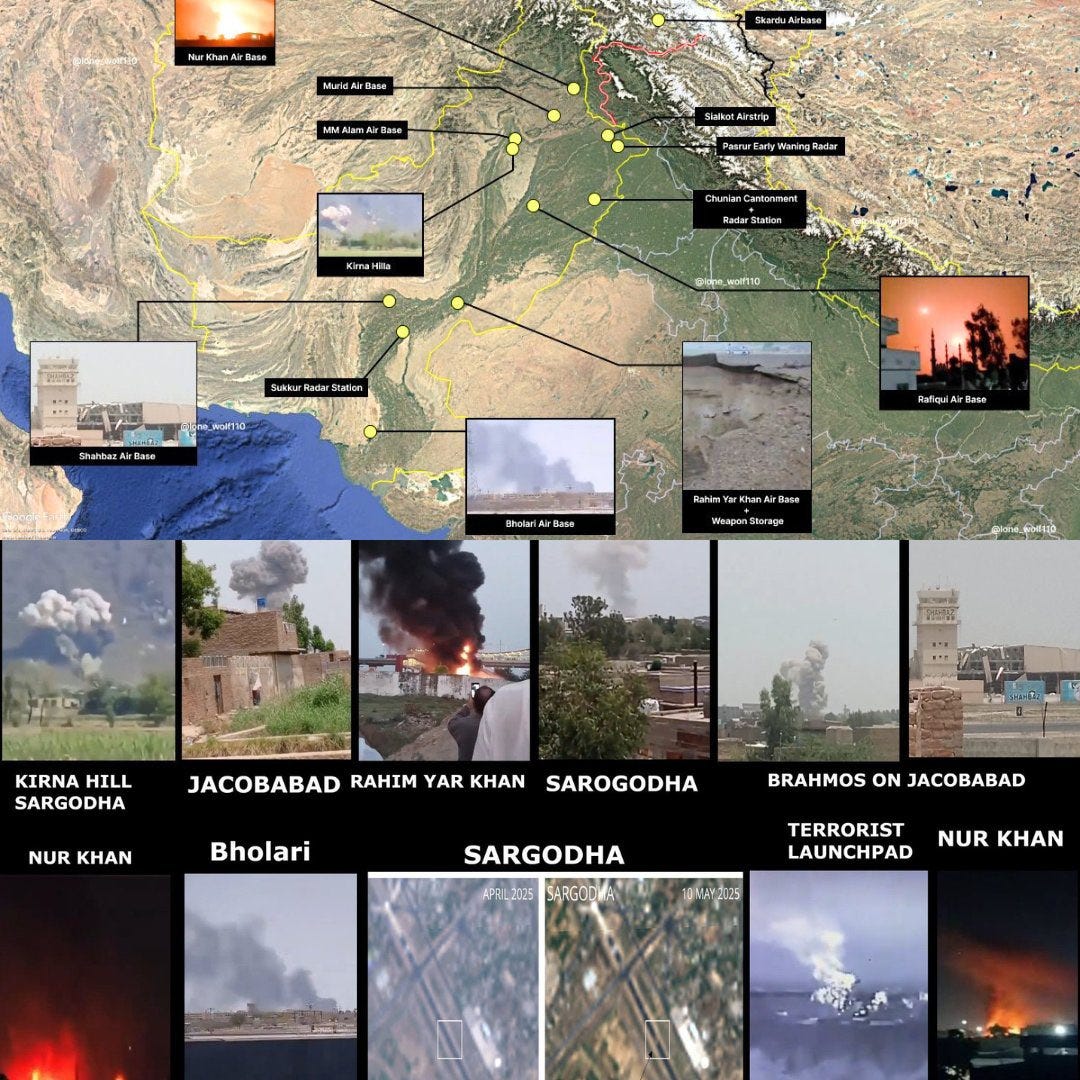
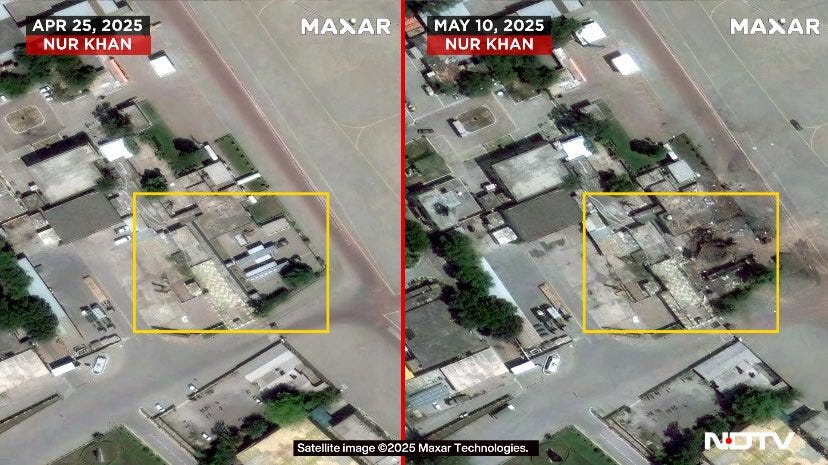
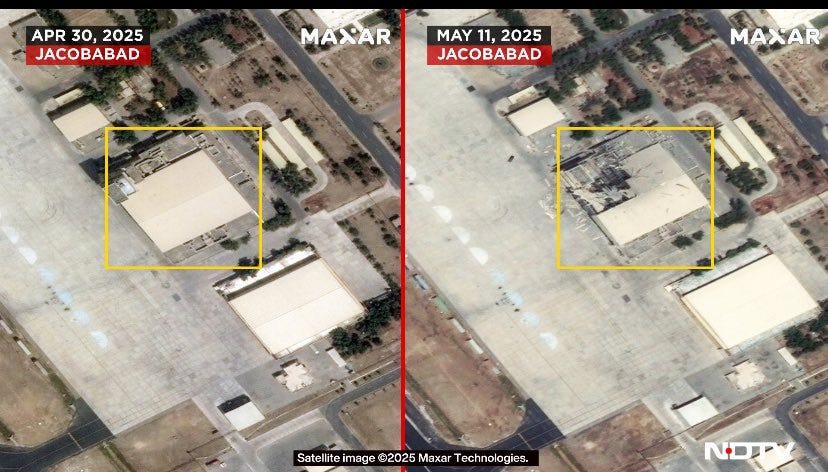
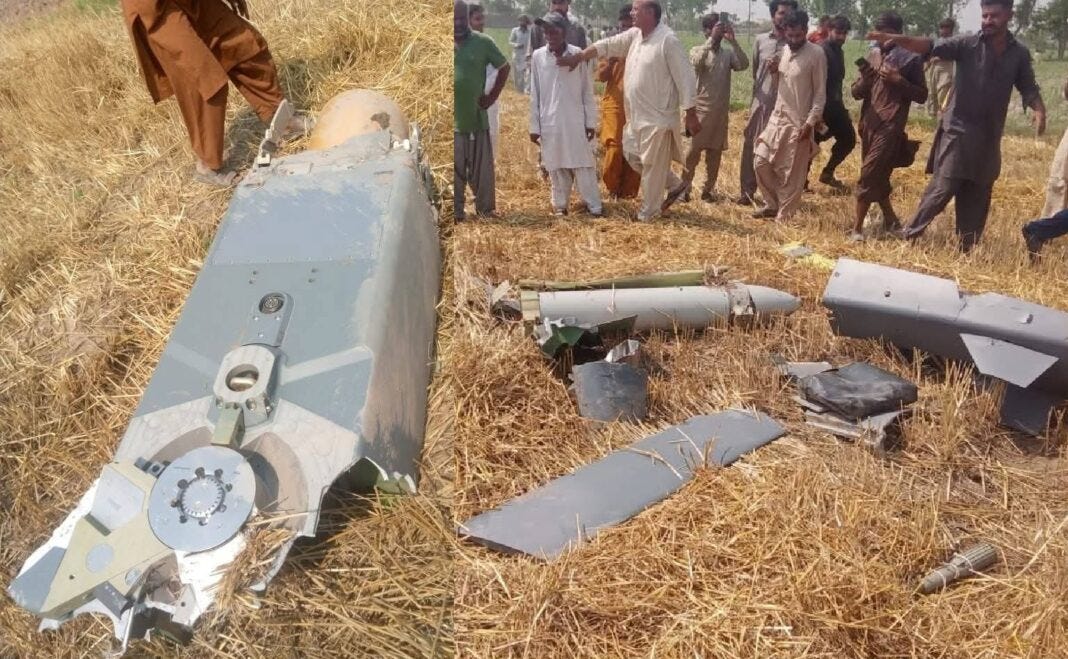
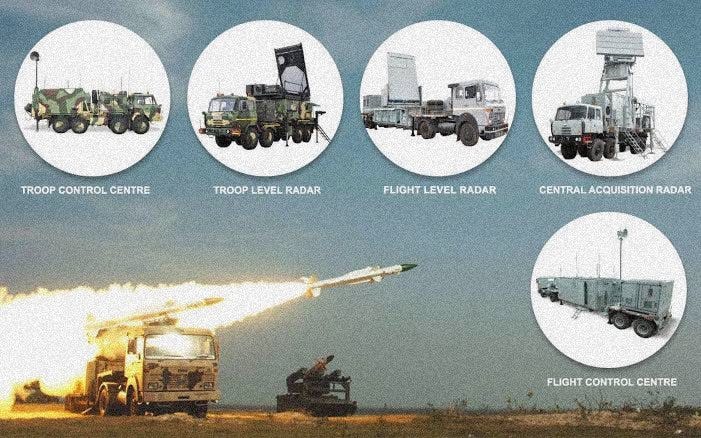
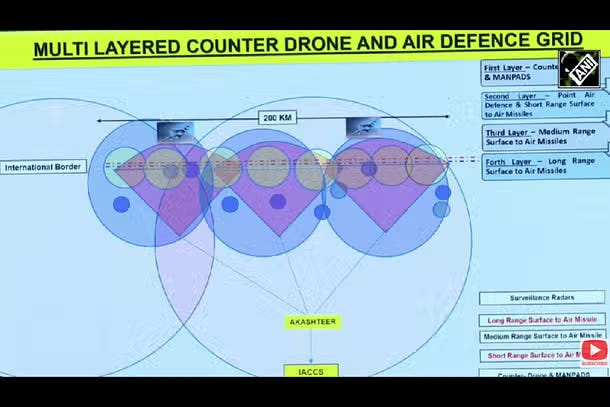
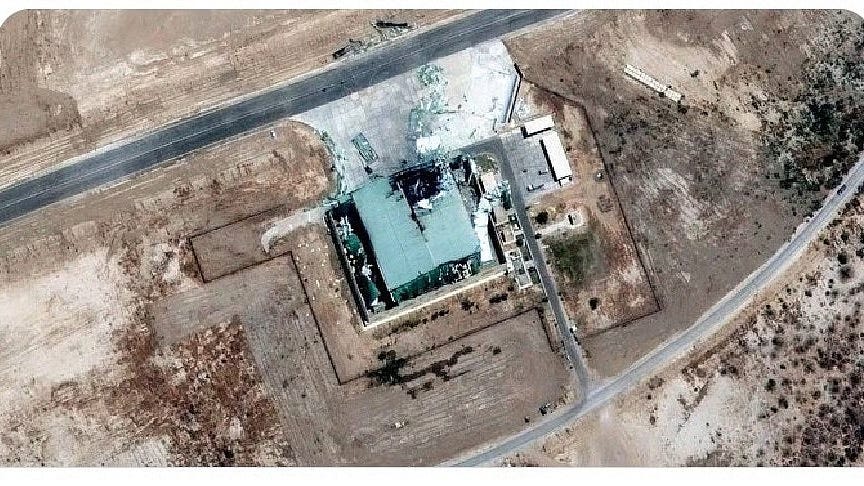
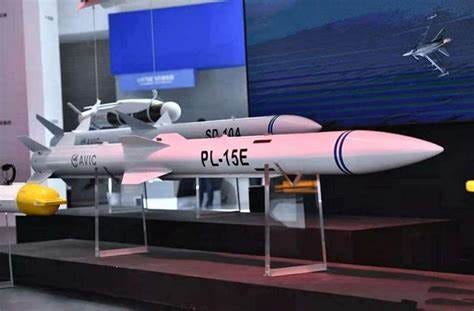
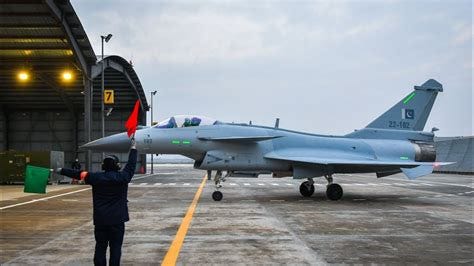
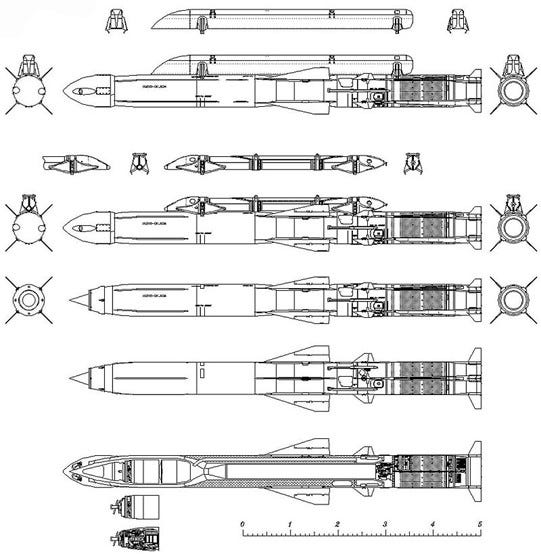


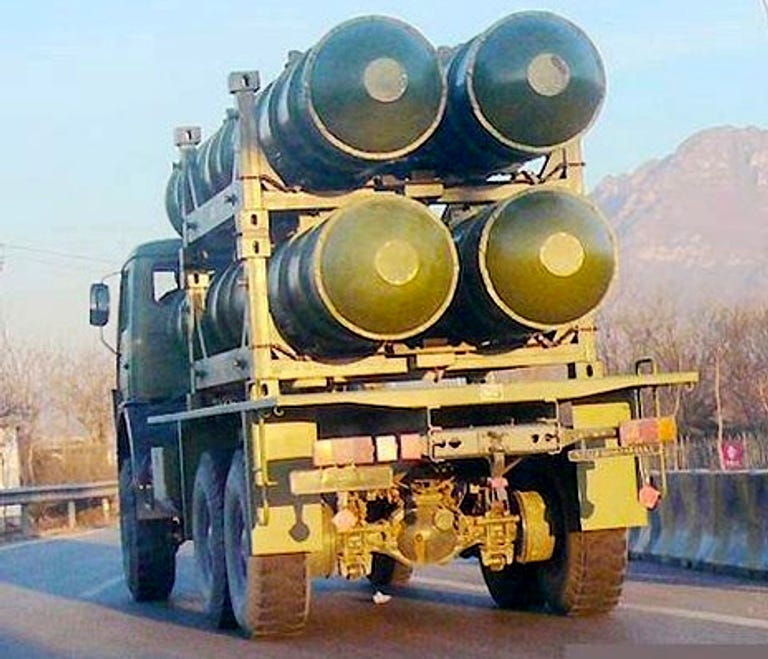


Excellent, sober and objective account of what happened. I hope they put down the swords and realize that this rivalry is useless for either country.
Nice text , like alweys.